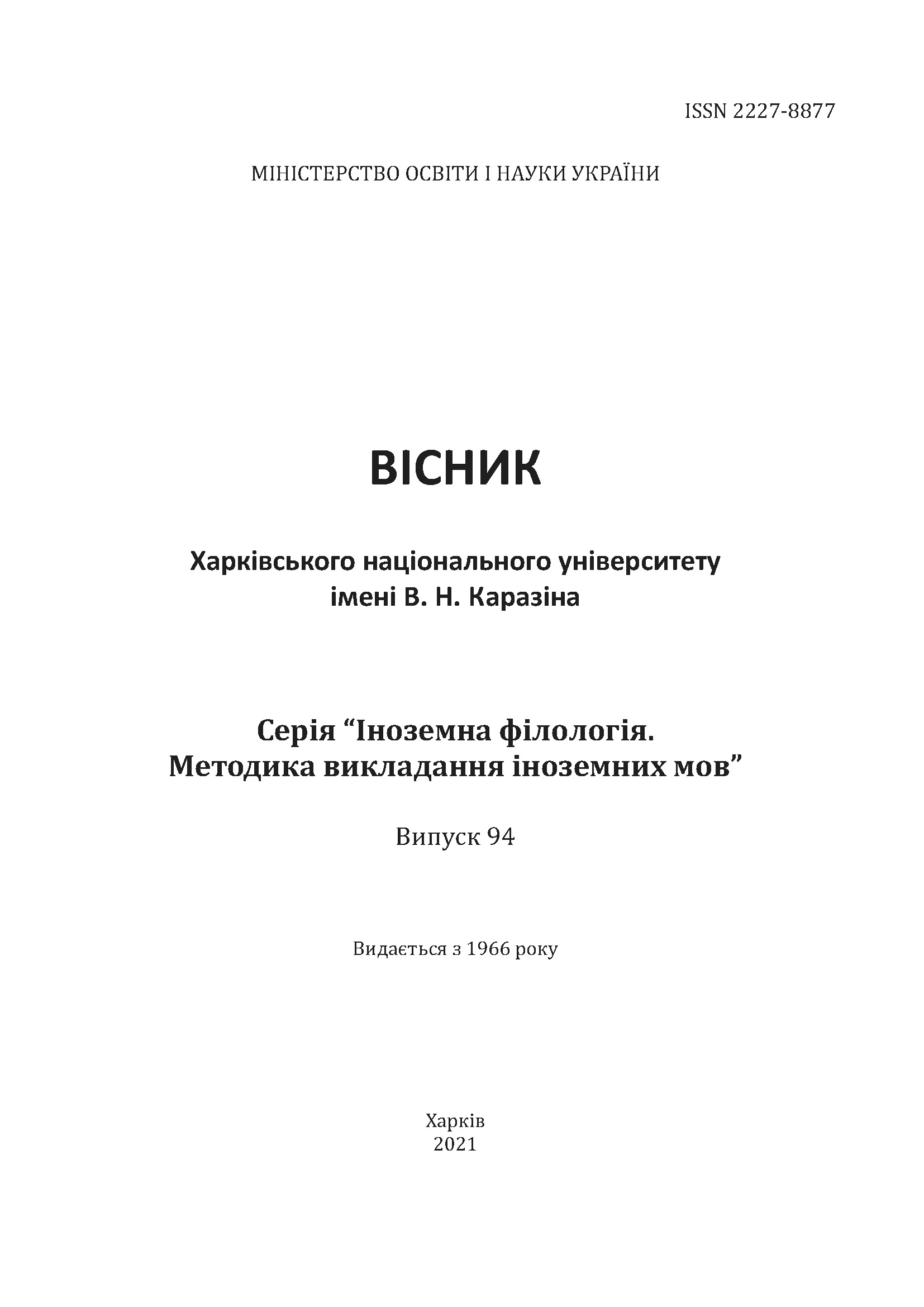Jabberwocky in French Translations
Abstract
This paper focuses on the specifics of rendering lexical nonsense into the target language. The research is done on the basis of one of the outstanding poems of all times belonging to the genre of nonsense, namely Jabberwocky by Lewis Carroll and 12 translations into French. As a result of the research it was established that the interpretation of any nonsensical representation of the lexical level has a significant impact on its reproduction in the target language, but does not limit translators in their creative approaches. We claim that nonsense is an interesting, complex, and ambiguous phenomenon which implies a plurality of potential options for its interpretation, and reproduction in the target language. Lexical nonsense units are deprived of one single sense and thus one single variant of their interpretation due to their word formation. In most cases, Lewis Carroll chose blending, which resulted in coining new words with two or more meanings “packed up” into one word. To make interpretation easier, the author gave his commentaries on the pages of the literary work. In most cases, L. Carroll’s game with meanings is reproduced in French translations by means of calquing the word-formation pattern. In certain cases, translators are guided by the author’s commentary and they select the means of the French language as accurately as possible to reproduce Carroll’s intentions. In most cases, Carroll’s lexical nonsense units are reproduced in the French translations by means of blending and compounding. In some cases, the translators take a creative approach bringing new meanings into Carroll’s game, different from his initial intention. And their game becomes so specific that it goes beyond the reader’s imagination. The translators’ preference to use calque to coin their equivalents is a manifestation of the domestication strategy in most analyzed translations. Only one translator borrowed English nonsensical lexemes to name main characters in his French translation, which we consider to be the manifestation of foreignization strategy.
Downloads
References
ABBYY Lingvo x 3: Слова [Electronic resource]. Iss. 14.0.0.715.
Carroll, L. The hunting of the Snark: An agony in eight fits. Retrieved from https://www.gutenberg.org/cache/epub/13/pg13-images.html
Carroll, L. Through the looking-glass. Retrieved from http://www.gutenberg.org/files/12/12-h/12-h.htm.
Cui, J. (2012) Untranslatability and the method of compensation. Theory and Practice in Language Studies, 2(4), 826–830.
Demurova, N. M. (1978). Jedvard Lir i anglijskaja pojezija nonsensa [Edward Lear and English poetry of Nonsense]. Topsy-Turvy World, English Humor in Verse, 5–22. Retrieved from http://www.limericks.narod.ru/lear.htm. (in Russian)
Dictionary by Merriam-Webster. Retrieved from https://www.merriam-webster.com
Jabberwocky de Lewis Carroll en français. Retrieved from https://angellier-biblio.univ-lille3.fr/ressources/jabberwockytraduction.html
Jabberwocky Summary & Analysis. Retrieved from https://www.litcharts.com/poetry/lewis-carroll/jabberwocky
Jabberwocky Variations. (by Henri Parisot). Retrieved from http://www76.pair.com/keithlim/jabberwocky/translations/french2.html
Kocherhan, M. P. (1999). Do pytannia pro bezekvivalentnu leksyku i lakuny ta sposoby yikh kompensatsii [To the issues of non-equivalent words and ways of their compensation]. Problemy zistavnoi semantyky. Zbirnyk statei za dopovidiamy Mizhnarodnoi naukovoi konferentsii z problem zistavnoi semantyky [Problems of comparative semantics. Collection of papers], 42–45. (in Ukrainian)
Korunets, I. V. (1986). Teoriia i praktyka perekladu [Theory and practice of translation]. Kyiv: Vyscha shkola. (in Ukrainian)
Kyiak, T. R., Naumenko, A. M., & Ohui, O. D. (2008). Perekladoznavstvo (nimetsko-ukrainskyi napriam) pidruchnyk [Translation studies (from German into Ukrainian) textbook]. Kyiv: Vydavnycho-polihrafichnyj tsentr «Kyivs’kyj universytet». (in Ukrainian)
Rebrii, O. V. (2016). Vstup do perekladoznavstva: konspekt lektsii dlia studentiv osvitno-kvalifikatsiinoho rivnia «Bakalavr» fakultetu inozemnykh mov [Introduction to translation studies]. Kharkiv: KhNU imeni V. N. Karazina. (in Ukrainian)
Tearle, O. A Short analysis of ‘Jabberwocky’ by Lewis Carroll. Retrieved from https://interestingliterature.com/2016/01/a-short-analysis-of-jabberwocky-by-lewis-carroll/
Uliana, E. Is there such a thing as untranslatability? Retrieved from https://medium.com/@elton.uliana.17/is-there-sucha-thing-as-untranslatability-90a50c6c186
Voronina, K. V. (2013). Osoblyvosti perekladu leksychnoho nonsensu: vplyv interpretatsii na vybir perekladatskoho vidpovidnyka [Specifics of rendering lexical nonsense: impact of interpretation on selection of traslator’s equivalent]. Naukovyi visnyk Chernivetskoho universytetu: zbirnyk naukovykh prats [Messenger of Chernivtsi University], 668, 201–210. (in Ukrainian).
Voronina, K. V. (2018). Providna stratehiia vidtvorennia leksychnoho nonsensu: odomashnennia chy ochuzhennia? [Leading strategy in rendering lexical nonsense: domestication or foreignisation?]. Naukovyi visnyk Khersonskoho derzhavnoho universytetu. Seriia: Perekladoznavstvo ta mizhkulturna komunikatsiia [Messenger of Kherson University], 1(2), 111–116. (in Ukrainian)
Voronina, K. V., & Valiiova, T. B. (2017). Jabberwocky Ukrainskoiu [Jabberwocky in Ukrainian]. Nova filolohiia. Zbirnyk naukovykh prats [New philology. Journal of articles], 69, 34–41. (in Ukrainian)
Zorivchak, R. P. (1989). Realii i pereklad. Na materiali anhlomovnykh perekladiv ukrainskoi prozy [Culture-specific concepts and translation. Based on Ukrainian prose transitions into English]. Lviv: Vyd-vo pry L’viv. derzh. un-ti. (in Ukrainian)




